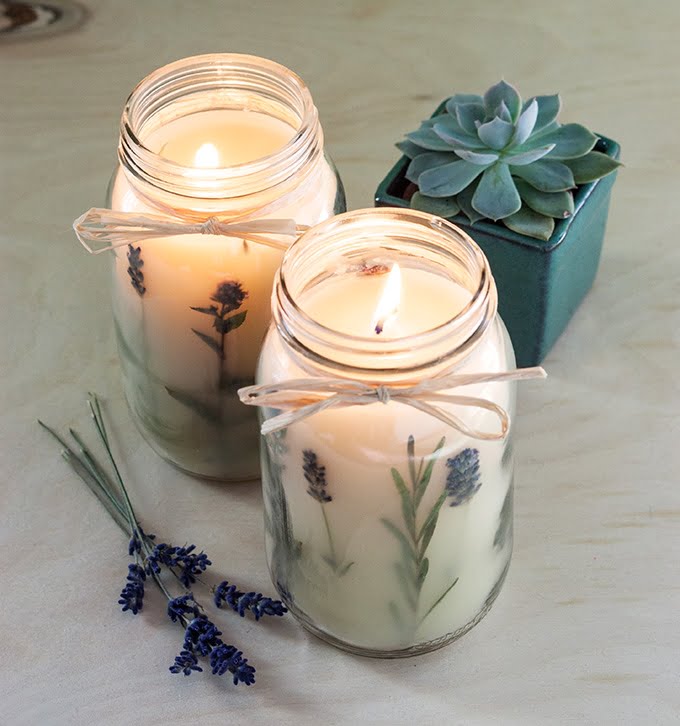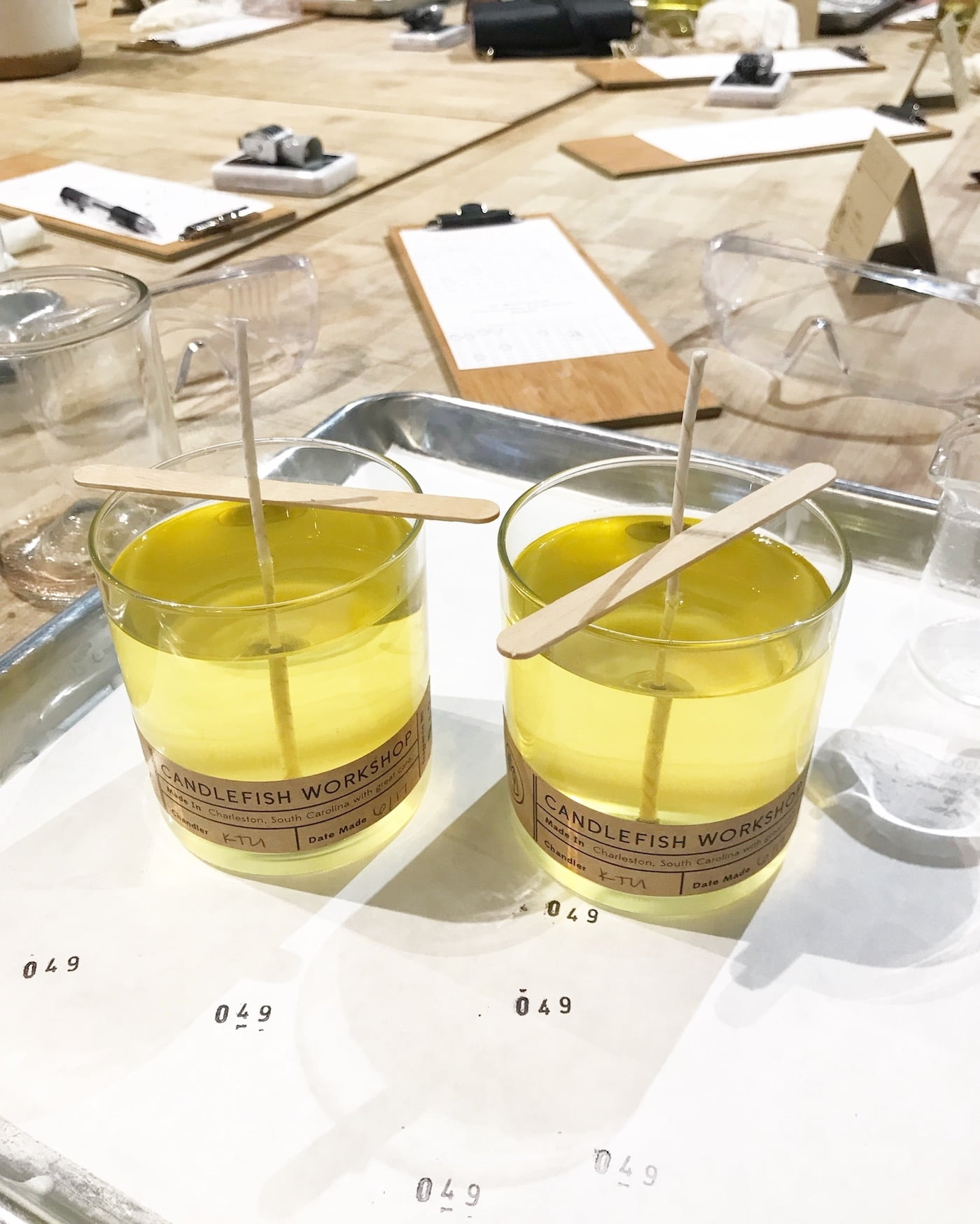Plaster of Paris has been a popular choice for creating molds for various crafts, including candle making. This versatile material is known for its durability and ease of use, making it an ideal option for crafting intricate and detailed designs.
In this article, we will explore the advantages of using plaster of Paris for making candle molds, provide a step-by-step guide on how to create these molds, offer some tips and tricks for using plaster of Paris effectively, and discuss alternative materials for making candle molds.
Plaster of Paris is widely used in the art and craft industry due to its versatility and moldability. When it comes to making candle molds, this material can produce durable and strong molds that can withstand the heat of melted wax.
Additionally, plaster of Paris is readily available and easy to work with, making it a convenient choice for both beginners and experienced crafters. It is crucial to understand the basic process of making candle molds before diving into the advantages and techniques involved in using plaster of Paris.
When it comes to creating unique and custom candle designs, plaster of Paris offers an excellent option for achieving intricate details and complex shapes. Its ability to capture fine details makes it an ideal choice for those looking to make specialized candles with distinct features.
In the following sections, we will delve into the step-by-step process of creating a candle mold using plaster of Paris, as well as explore some tips and tricks for achieving the best results. Whether you are new to candle making or simply looking to expand your crafting skills, understanding how to leverage plaster of Paris for candle molds can open up a world of creative opportunities.
Advantages of Using Plaster of Paris for Making Candle Molds
Plaster of Paris is a versatile and popular material that is commonly used for making candle molds. Its unique properties make it an ideal choice for crafters and hobbyists who want to create their own custom candle designs.
Durability and Strength of the Mold
One of the main advantages of using plaster of Paris for making candle molds is its durability and strength. Once the plaster has set, it creates a solid and sturdy mold that can withstand the heat of melted wax without deforming or breaking. This makes it perfect for repeated use, allowing you to create multiple candles from the same mold without compromising its integrity.
Easy to Use and Readily Available
Another advantage is that plaster of Paris is easy to use and readily available at most craft stores. It can be mixed with water to form a smooth, pourable slurry that quickly sets into a hard, chalk-like substance. This accessibility makes it an attractive option for those who want to try their hand at candle making without investing in specialized equipment or materials.
Ideal for Intricate Designs and Details
Additionally, plaster of Paris is well-suited for capturing intricate designs and details. Its malleable nature allows it to reproduce even the smallest features accurately, making it suitable for creating complex and decorative candle molds. Whether you’re looking to make intricately textured pillar candles or novelty shaped votives, plaster of Paris provides a reliable method for bringing your creative visions to life.
With its durability, accessibility, and ability to capture fine details effectively, plaster of Paris emerges as an excellent choice for those interested in making their own candle molds.
Step-by-Step Guide on How to Make a Candle Mold Using Plaster of Paris
To make a candle mold using plaster of Paris, you will need the following materials:
- Plaster of Paris
- Water
- Mixing container
- Stirring stick or spoon
- Candle to be used as a model
- Mold release agent or cooking spray
- Container for the mold
Mixing and Pouring the Plaster
Start by mixing the plaster of Paris with water in a mixing container. Follow the instructions on the packaging to ensure you have the right ratio of plaster to water. Stir the mixture thoroughly until it reaches a smooth consistency without any lumps.
Once your plaster mixture is ready, pour it into your chosen container. Make sure to pour it evenly and cover all surfaces inside the container. You can also tap the sides of the container to help remove any air bubbles trapped within the plaster.
Before the plaster sets completely, press your chosen candle model into the mixture. This will create a cavity that matches the shape and size of your candle. Be sure to hold it in place firmly and evenly for it to leave an accurate impression.
Allow the plaster to fully dry and set before removing your candle from its new plaster mold. Once removed, you can clean up any rough edges or imperfections with sandpaper or a craft knife.
Using these simple steps, making a candle mold using plaster of Paris is easy and efficient. The resulting mold is strong, durable, and ideal for capturing intricate details – making it an excellent choice for creating unique candles at home.
Tips and Tricks for Using Plaster of Paris for Candle Molds
The answer is yes. Plaster of Paris is an excellent option for crafting candle molds due to its strength, accessibility, and suitability for intricate designs.
Below are some tips and tricks for using plaster of Paris when making candle molds:
- How to Ensure a Smooth and Even Surface: After pouring the plaster into the mold, tap the sides gently to help release any air bubbles. You can also use a vibrating table or gently shake the mold to encourage the bubbles to rise to the surface.
- Dealing with Air Bubbles: To prevent air bubbles from forming in your plaster mixture, try mixing it slowly and thoroughly. You can also lightly mist the mold with water before pouring in the plaster to help minimize air pockets.
- Removing the Mold from the Container: Once the plaster has fully set, carefully remove it from the container by gently tapping around the edges or using a soft mallet. Be sure to handle it with care to avoid any cracks or damage.
By following these tips and taking proper care when working with plaster of Paris, you can create beautiful and long-lasting molds for your homemade candles. With a little practice and attention to detail, you’ll be able to craft professional-looking candle molds that will enhance your candle-making endeavors.
Alternative Materials for Making Candle Molds
Plaster of Paris is often the go-to material for making candle molds due to its durability and strength. However, there are alternative materials that can also be used for this purpose, each with its own set of advantages and disadvantages. Silicone molds are a popular choice because they are flexible, making it easy to remove the finished candle without damaging it.
They are also reusable, making them a cost-effective option in the long run. However, silicone molds can be more expensive initially and may not be as ideal for intricate designs.
Another alternative to plaster of Paris is using latex molds. These molds can capture intricate details and are relatively inexpensive. However, they may not be as durable as plaster of Paris or silicone, so they may need to be replaced more frequently. Additionally, latex molds require a release agent to prevent the candle from sticking to the mold.
Metal molds are another option for making candle molds. They are durable and can withstand high temperatures, making them suitable for use with various types of wax. However, metal molds can be more difficult to work with when creating intricate designs and details, and removing the finished candle from a metal mold can be challenging.
Overall, while plaster of Paris is a great choice for making candle molds due to its strength and ease of use, it’s important to consider these alternative materials based on your specific needs and preferences.
| Materials | Advantages | Disadvantages |
|---|---|---|
| Silicone Molds | Flexible and easy to remove candles | More expensive initially; may not be ideal for intricate designs |
| Latex Molds | Capture intricate details; relatively inexpensive | May not be as durable; requires a release agent |
| Metal Molds | Durable; withstand high temperatures | Difficult for intricate designs; challenging to remove candles |
Common Mistakes to Avoid When Using Plaster of Paris for Candle Molds
When using plaster of Paris for making candle molds, it is important to be aware of some common mistakes that can affect the quality of the mold and the candles produced. Careful attention to detail can help ensure a successful outcome when working with this material.
Over-Mixing the Plaster
One common mistake to avoid when using plaster of Paris for candle molds is over-mixing the plaster. Over-mixing can lead to air bubbles in the mold, which can affect the final result of the candle. It is important to follow the manufacturer’s instructions for mixing the plaster thoroughly but without overdoing it. This will help prevent air bubbles from forming and ensure a smooth surface finish on the mold.
Not Properly Greasing the Mold
Another mistake to avoid is not properly greasing the mold before pouring in the plaster. Failing to do so can make it difficult to remove the hardened plaster from the container, resulting in a damaged or unusable mold. Using a release agent such as cooking spray or petroleum jelly can help prevent the plaster from sticking to the mold, making it easier to extract once it has set.
Using Too Much Water in the Mix
Using too much water when mixing plaster of Paris can also result in a weak and brittle mold that may not hold up well over time. It is important to carefully measure and follow the recommended ratio of water to plaster specified by the manufacturer. This will help ensure that the resulting mold is strong and durable, capable of producing high-quality candles with clear details and intricate designs.
By being mindful of these common mistakes, you can successfully create candle molds using plaster of Paris that will yield professional-looking candles every time. Understanding these potential pitfalls will help you achieve better results and maximize your enjoyment of this creative process.
The Best Types of Candles to Make With a Plaster of Paris Mold
When it comes to making candles, using a plaster of Paris mold can open up a world of possibilities. The durability and strength of plaster of Paris make it an excellent choice for creating intricate and detailed candle molds. But what types of candles are best suited for this type of mold? Let’s explore the best types of candles to make with a plaster of Paris mold.
One popular choice for making candles with a plaster of Paris mold is taper candles. Taper candles have a timeless elegance, and the smooth, even surface that can be achieved with a plaster mold is perfect for creating these slender, classic candles.
Another great option for using a plaster of Paris mold is to make pillar candles. Pillar candles come in various shapes and sizes, and the versatility of plaster molds allows you to create unique designs that would be challenging to achieve with other materials.
Lastly, novelty-shaped candles are also well-suited for plaster of Paris molds. Whether you want to create animal-shaped candles, geometric designs, or other fun shapes, plaster molds are ideal for capturing the intricate details necessary for these whimsical creations.
Conclusion
In conclusion, plaster of Paris is indeed a fantastic material for making candle molds. Its durability and strength make it ideal for creating long-lasting molds that can withstand multiple uses.
Additionally, the ease of use and accessibility of plaster of Paris makes it a convenient option for those looking to try their hand at candle making. Its ability to capture intricate designs and details also sets it apart from other materials, allowing for unique and beautiful candles to be created.
The step-by-step guide provided in this article offers a clear overview of the process of making a candle mold using plaster of Paris. From the materials needed to creating the candle cavity, the guide covers all the necessary steps to ensure success. The tips and tricks included also address common issues such as achieving a smooth surface and dealing with air bubbles, offering valuable insight for beginners.
For those interested in exploring alternative materials for making candle molds, silicone molds, latex molds, and metal molds are also briefly discussed. However, the advantages of using plaster of Paris are highlighted once more to emphasize its suitability for creating various types of candles. Overall, readers are encouraged to consider giving plaster of Paris a try when venturing into the world of candle making, as it offers numerous benefits and opportunities for creativity.
Frequently Asked Questions
Can You Make Candles in Plaster of Paris?
Yes, you can make candles in plaster of Paris. Plaster of Paris can be used to create custom candle molds by pouring the melted wax into the mold and allowing it to harden. However, it’s important to note that plaster of Paris is not heat-resistant, so it may not be suitable for all types of candles.
What Is the Best Material for Candle Molds?
The best material for candle molds depends on the type of candle being made. Silicone molds are popular due to their flexibility and ease of use.
Aluminum and stainless steel molds are durable and heat-resistant, making them suitable for a wide range of candle types. Ultimately, the best material for a candle mold will depend on the specific needs of the candle maker.
Can You Make Candle Holders Out of Plaster?
Yes, you can make candle holders out of plaster. Plaster can be molded or sculpted into various shapes and designs to create unique and custom candle holders.
Once the plaster has hardened, it can be painted or decorated to enhance its appearance. However, it’s important to consider the flammability of plaster when using it as a material for candle holders.

Welcome to my candle making blog! In this blog, I will be sharing my tips and tricks for making candles. I will also be sharing some of my favorite recipes.





